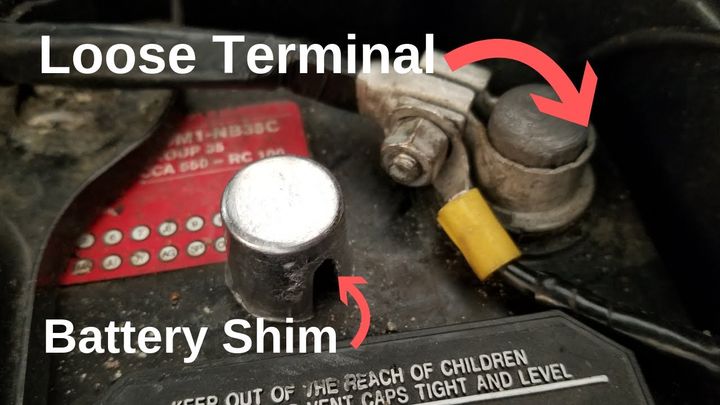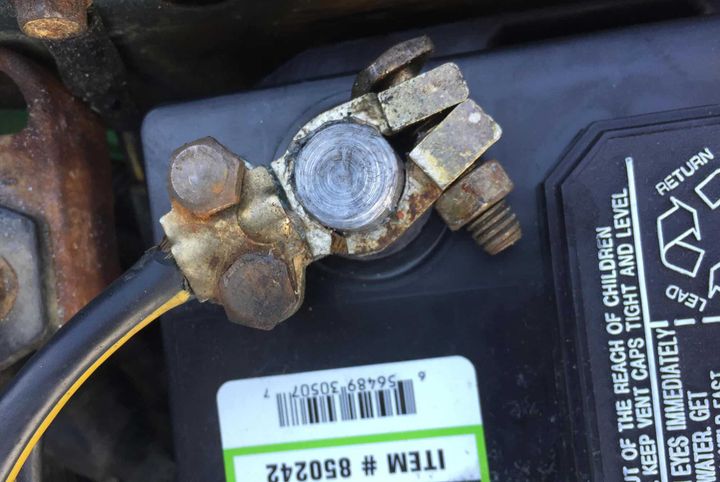


A loose battery terminal might seem insignificant, but it can lead to various electrical problems in your vehicle. From starting troubles to accessory failures and battery drainage, a loose connection at the battery terminals can wreak havoc on your car's electrical system. This article explores the telltale signs of a loose battery terminal and why addressing this common automotive issue promptly is crucial.

The battery is the heart of your vehicle's electrical system, providing power to start the engine and operate various electrical components. A secure connection between the battery terminals and cables is essential for ensuring a reliable flow of electricity throughout the system. However, vibrations, temperature changes, and improper installation can cause these connections to loosen over time, leading to electrical issues.
One of the most apparent signs of a loose battery terminal is difficulty starting your vehicle's engine. The starter motor requires significant electrical power to crank the engine, and a loose connection can prevent sufficient current from reaching it. As a result, you may experience a sluggish or non-responsive starter when turning the key, making it challenging or impossible to start your car.
| Starting Issue | Cause |
|---|---|
| Difficulty cranking engine | Insufficient current reaching starter motor |
| Clicking sound from starter | Starter solenoid engaging but failing to turn starter motor due to low current |
Loose battery terminals can cause increased electrical resistance, leading to voltage drops in the system. This voltage drop can manifest as dimming headlights or interior lights, particularly when the electrical load is high, such as when the headlights are on, and the engine is idling.
Additionally, a loose battery terminal can cause other electrical accessories to malfunction or behave erratically. Radios, power windows, and other components may cut out or operate inconsistently due to the inconsistent power supply resulting from the loose connection.
If you notice that your battery is draining more quickly than usual, a loose battery terminal could be the culprit. Loose connections can allow parasitic battery drain, where electrical components fail to shut off properly, continuously drawing power from the battery even when the vehicle is not in use.
Parasitic battery drain occurs when electrical components remain powered on, even after the vehicle is turned off. This can happen due to a loose battery terminal, which can prevent the proper shut-off of certain electrical systems, leading to a gradual depletion of the battery's charge.
Many modern vehicles are equipped with warning lights on the dashboard that can alert you to potential issues with the electrical system. A loose negative battery cable can trigger the battery or charging system warning light, indicating a problem with the electrical connection or charging circuit.
Loose battery terminals can allow moisture to seep in, leading to corrosion buildup on the terminals themselves. This corrosion acts as an insulator, further increasing the electrical resistance and exacerbating the issues caused by the loose connection.
A loose battery terminal creates increased electrical resistance in the system, which can impede the flow of current to various components. This resistance can manifest in various ways, such as dimming lights, accessory malfunctions, and starting difficulties.
| Symptom | Cause |
|---|---|
| Corrosion buildup on terminals | Moisture exposure due to loose connection |
| Increased electrical resistance | Reduced current flow due to loose connection |
In some cases, a loose battery terminal can cause intermittent electrical failures, where the entire electrical system may shut off while driving. This is typically caused by vibrations or bumps in the road, which can temporarily disrupt the already loose connection, leading to a complete loss of power.
To identify if your battery terminals are loose, you can perform a visual inspection and gently wiggle the cables and connections. Look for signs of:
Corrosion
Oxidation
Looseness around the terminals
Additionally, you may notice that the battery itself is not securely mounted, which can contribute to the loosening of the terminals over time.
Several factors can contribute to the loosening of battery terminals:
Vibrations and engine movement
Temperature cycling and expansion
Improper tightening during installation
Cable routing and strain
To resolve the issue of a loose battery terminal, follow these steps:
Gather the necessary tools (wrench, pliers, wire brush, or sandpaper)
Disconnect the battery cables (negative first, then positive)
Clean corrosion from terminals
Tighten terminal connections (positive first, then negative)
Apply dielectric grease or battery terminal protector
Ensure the battery is securely mounted and cables are properly routed
To prevent future issues, consider:
Applying a thin layer of dielectric grease or battery terminal protector to the connections after tightening
Ensuring the battery is securely mounted
Ensuring the cables are properly routed to avoid strain
A loose battery terminal can lead to various electrical problems in your vehicle, such as starting difficulties, dimming lights, accessory malfunctions, and battery drainage. By recognizing the signs and addressing the issue promptly, you can ensure a reliable electrical system and prevent potential breakdowns or costly repairs. Regular inspection and maintenance of the battery terminals are crucial for maintaining your vehicle's electrical health.
The telltale indications of a loose battery terminal include difficulty starting the engine, dimming headlights or interior lights, electrical accessories malfunctioning, warning lights on the dash, and the battery draining quickly.
Vibrations, temperature changes, improper installation, and cable routing or strain can contribute to the loosening of battery terminals over time.
You can perform a visual inspection, gently wiggle the cables and connections, and look for signs of corrosion, oxidation, or looseness around the terminals. Additionally, an unsecurely mounted battery can contribute to loose terminals.
A loose negative battery cable can trigger the battery or charging system warning light on the dashboard, indicating an issue with the electrical connection or charging circuit.
Loose connections can allow parasitic battery drain, where electrical components fail to shut off properly, continuously drawing power from the battery even when the vehicle is not in use, gradually depleting the battery's charge.
Vibrations or bumps in the road can temporarily disrupt an already loose battery terminal connection, leading to a complete loss of power and intermittent electrical failures while driving.
To resolve the issue, disconnect the battery cables (negative first, then positive), clean corrosion from terminals, tighten terminal connections (positive first, then negative), apply dielectric grease or battery terminal protector, and ensure the battery is securely mounted and cables are properly routed.
To prevent future issues, apply a thin layer of dielectric grease or battery terminal protector to the connections after tightening, ensure the battery is securely mounted, and ensure the cables are properly routed to avoid strain.
Applying dielectric grease or battery terminal protector to the connections helps prevent corrosion and oxidation, which can increase electrical resistance and contribute to loose terminals over time.
Addressing a loose battery terminal issue promptly is crucial to ensure a reliable electrical system and prevent potential breakdowns or costly repairs caused by the various electrical problems that can arise from a loose connection.

Miguel started tinkering with car radios as a teenager, fascinated by the intricate dance of wires and circuits. This passion led him to pursue a career as an automotive electrician. For the past 10 years, Miguel has tackled everything from flickering headlights to mysterious electrical gremlins. He thrives on troubleshooting electrical problems and enjoys sharing his knowledge to empower car owners to understand their vehicles better.



